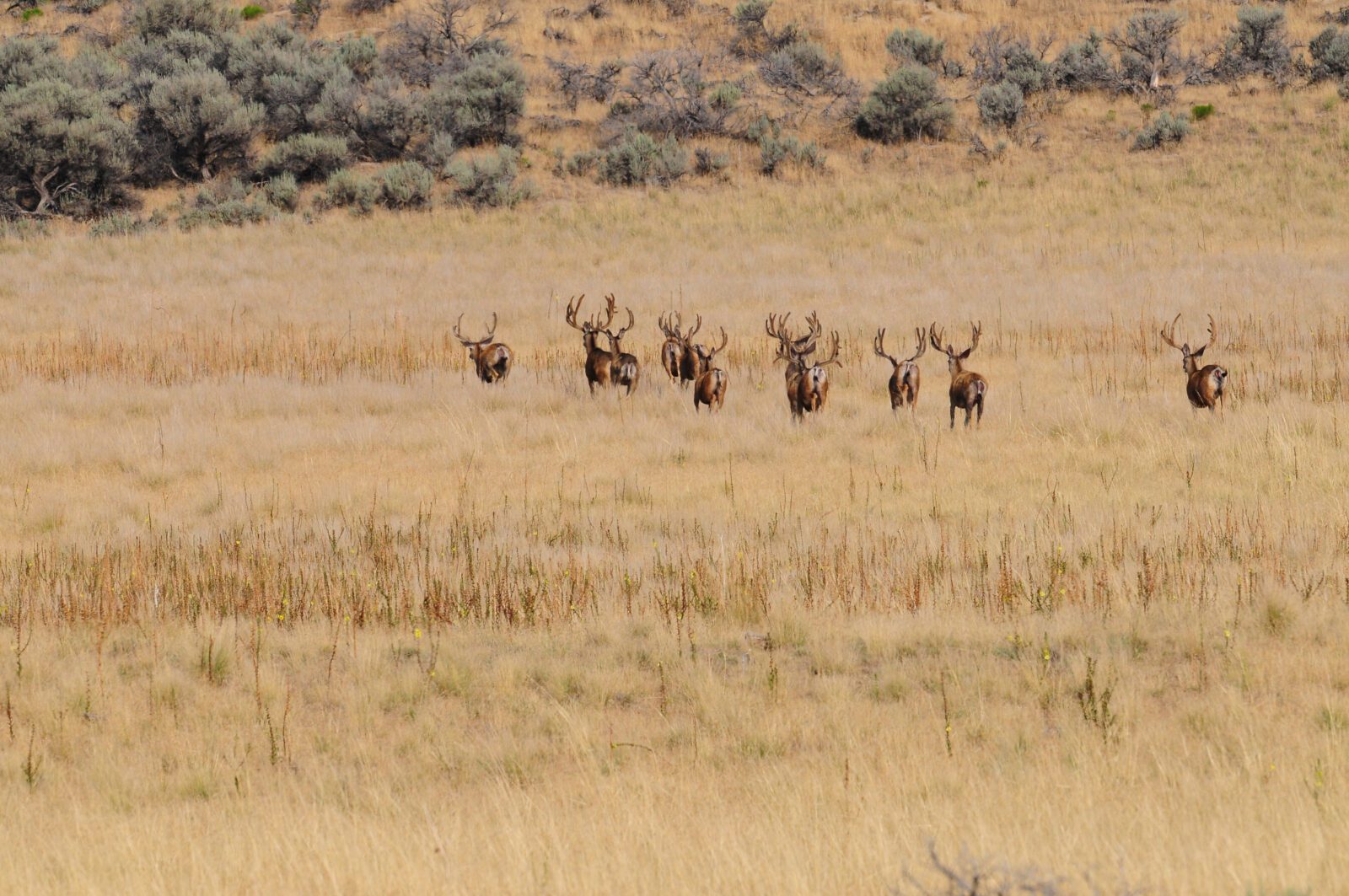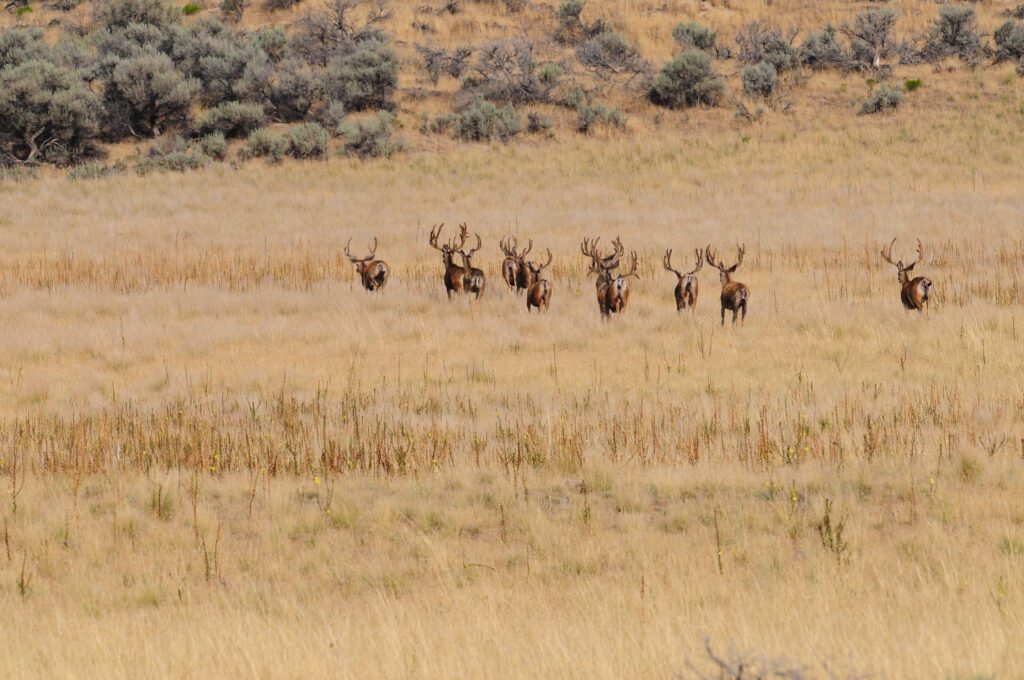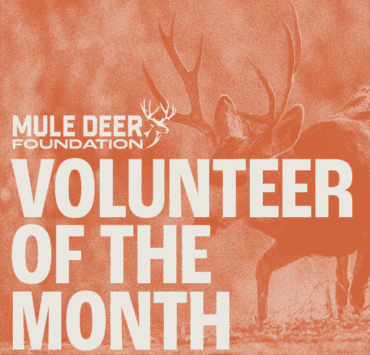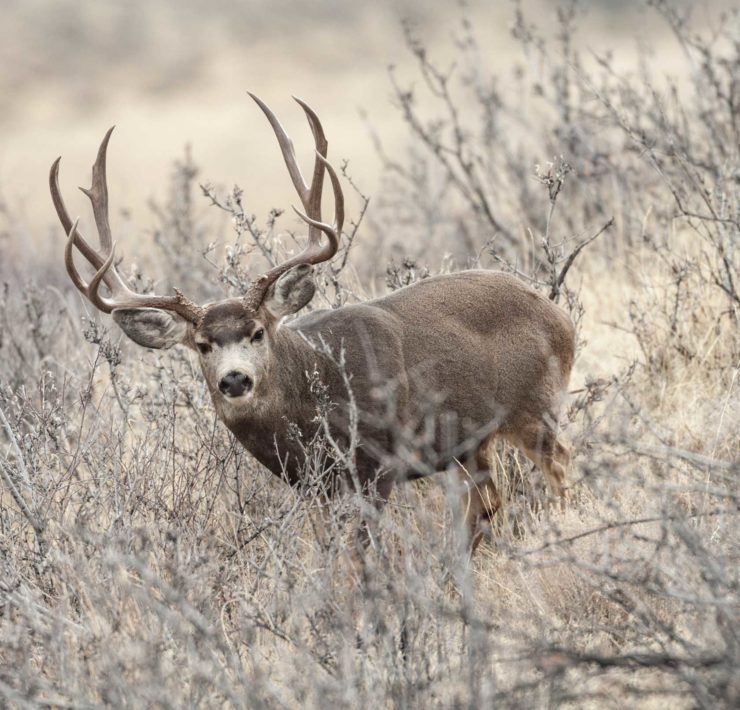“Archery Deer on the Great Plains”


Everything you need to know to take your bow on a walk through the Great Plains this season.
The Landscape:
The Great Plains are the most beautiful piece of this country. While often overlooked, the rolling hills of grass, sage brush seas, and the deer that call this landscape home offer some of the best hunting in the west. There is something to be said for seeing 100’s of animals in a day and being able to glass for miles in any direction. Hunting the Great Plains can be some of the easiest hunting you will have and some of the most challenging.
The plains appear tame as a saddled horse and wild as a mustang in the same instant. Looking out over rolling hills and grazing deer everything seems possible and notching your tag appears a certainty. Hours later on your tenth blown stalk of the day, out of water, and running from a rattling sound under a rock, you are suddenly surrounded by the wild land Hugh Glass crawled across after being mauled by a grizzly 200 years ago.
I am in a 15 year love affair with these salt flats and sagebrush seas. Here’s what I have learned over many seasons in the short grass.
The Weather:
HOT, HOT, HOT:
When most folks think on the upcoming deer season their first thoughts are vivid memories of frozen fingers and toes last season. Followed by how they are going to stay warm this year. During early season archery seasons on the prairie it is the heat not the cold which is your biggest concern. The sun and lack of shade combined with the constant unrelenting wind can be a culture shock for those coming from mountain, or tree stand hunting.
On the Great Plains you need to prepare yourself to find or create shade, and a refuge from the wind. The other major hot weather concern is having a plan to pack out your meat and get it cooled down ASAP.
When it Rains:
Rain should be a concern for the Great Plains hunter. Much of this land is readily accessible to anyone who owns a 4×4 truck and is willing to travel an hour or so on BLM roads. But, once you are in the backcountry with your truck as basecamp, a few inches of rain can leave you stranded.
The soil in the plains is unique. The top few inches turn to an oil slick after very little moisture. This causes roads to be rutted to the point of impassibility in a few hours. Even an unused and un-rutted road can be treacherous as your $1500 tires spin in place, coated in the oily muck.
I have been stranded in the sage several times and the only thing to do is to wait it out. After a rain storm waiting through just 12 or 18 hours of wind and sun will dry out most roads. Then you can get out using 2 wheel drive. But what to do in those extra hours, did you bring extra water, food, and is your meat sufficiently cold to last?
Thunderstorms:
Growing up in the Ozarks, thunderstorms were just part of life. I never remember feeling thunder shake my chest or my house shudder in a storm. A thunderstorm on the Great Plains is another animal entirely. Any storm you ride out in a tent, or the back of your truck seems extreme, but you never forget your first storm on the prairie.
There is nothing to block the wind and no trees to soak up lightning on the great plains. Often times your vehicle or tent could be the tallest thing on the landscape. Make camp in as protected area as possible, avoid hilltops, and dry creek beds.
The Gear:
Boots:
Boots are always important on a western hunt and their effect on your hunts success cannot be overstated. On the Great Plains there are a few additional concerns. Snake proof: there is a balance to be struck between the comfort of boots and their level of snake protection. Early season archery hunts on the Great Plains will have snakes. Due to the comparatively light terrain they will also have you walking further than a similar mountain hunt.
Safety or comfort?
I always choose a more comfortable pair of boots with less snake protection. I have also been bit three times. There are also a lot of old cowboys who will beat their feet to death but never have to take anti-venom. Choose your pain. You can be in pain from bulky inflexible boots, or you can be in pain because you have venom in your calf.
Hats:
Sunburn can ruin a hunt especially for readers that share my Irish ancestry whose skin doesn’t adapt well to sunshine. While long sleeve shirts and pants protect most of your body, burned ears and neck can make you miserable.
When hunting on the prairie I wear a cowboy hat with a blaze orange hat band like the one available from Tom Beckbe: https://tombeckbe.com
Hats with a wide brim may feel silly, especially for those coming from somewhere in the east. Trust me, having your buddies make fun of you is easier than packing aloe vera or living with sun burn.
Warm Weather Clothing:
With all the amazing options from Sitka or FirstLite I thought about not including a clothing section. I don’t want to make the reader feel they need to buy the latest item to find success on the Great Plains. I ultimately decided on including the section because while both these companies have amazing hot weather gear, I see a ton of deer killed by dudes in blue jeans and tan pearl snap shirts. The point is, don’t let not being able to afford the latest new technical clothing stop you from pursuing deer across the plains.
I have a ton of success hunting in solids. Wearing brown and sitting still will do wonders. That said both Sitka and FirstLite have some great options for the plains and hot weather. If you are in the market any of their pants that include zippered vents along the side are super handy. These vents shed heat from your body while you walk and help keep the swamp butt at bay.

Water filters and hauling:
You drink more water on prairie hunts. You need to be prepared to bring more on your person and in your vehicle. I carry four 32 oz Nalgene’s in my pack. I also pack 12 gallons of water in my truck for a 5 day hunt. This strategy allows me 2 gallons a day to drink and leaves a few gallons left in case I get stuck.
Filtering water is also a concern. Often times finding a water source to filter from is tough or impossible. Include this research in your pre-hunt plans and remember just because OnX shows a dotted blue line doesn’t mean there will be water there in September or October.
Optics:
Optics are big deal on the Great Plains. First of all you can see FOREVER. If you are coming from back east, or are primarily a mountain hunter you will be amazed at how much you can see from one spot on the plains.
My first few times hunting the prairie on day 3 or 4 my eyes started to hurt at night. When I asked my doctor later, she said the focus muscles in my eyes were sore from looking through optics for 6+ hours a day. That was a new feeling.
Due to this increase emphasis on glassing increasing your baseline optics is a good idea. If you typically carry 8×42 Binos consider going to a 10×42. If you typically carry 10x 42 think about moving up to a 12×50 pair.
Kneepads:
You might be thinking, “I am a mountain hunter and I take a knee all the time on granite, I don’t need a knee pad”. Your right, the knee pad isn’t for taking a knee to shoot or rest at all. The reason for the kneepads is the lack of trees.
In the mountains there are massive terrain features you can use to your advantage. I have walked upright for half a mile in the mountains with no fear the deer could see me. On the prairie, there’s nothing to hide behind. You must crawl on your hands and knees for miles. Or slide on your belly to hide behind an 18 inch high sage brush. This is where kneepads are great.
You can buy pants with built in pads which are super handy. You can also get some flooring kneepads from the hardware store and make those work just fine.
Gloves:
Along the same lines as kneepads gloves are for your protection while crawling. The ground in the Great Plains is littered with cactus of all kinds. It’s not the big spines that become a problem but the hundreds of near microscopic spines stuck between them. These can take months to work their way out of your hand.
You need your hands for too much, to risk injury early in a hunt. Wear protective gloves.
Meat Protection:
It’s hot out there. How fast can you get your animal into a cooler? This is the question you need to be asking yourself before you pull the trigger. It’s 85 degrees at 11 a.m. and you are 3 miles from the truck with a buck on the ground. Can you break that deer down and get him into the shade or a cooler before the meat spoils?
Once you get your meat into a cooler, how can you make sure the meat gets cold, and stays cold?
I use frozen quart milk jugs full of water. The jugs are sealed so the meat doesn’t sit in water. I can stack the meat atop these blocks and seal the cooler around them. I have kept bone in quarters in a Yeti cooler for 8 days with no meat loss using this method.
Keeping coolers in the shade is a separate problem. When hunting with a partner you could find yourself in a situation where you have to store your meat while you keep hunting. I slide coolers under the back of my truck and plan for the days shade when parking. The situation may arise where you need to get your meat into town while your buddy keeps hunting. Discuss this possibility early and have a communication plan.
Benefits:
Huge Field of Vision:
The advantage of glassing huge distances in every direction cannot be overstated. Picking a high ridge before the sun rises and seeing every avenue of approach in 10 miles is a wonderfully secure feeling. While you will absolutely miss deer, it still feels like you have seen everything after a day behind the binos.
Opportunity to see 100’s of hunt-able critters:
The coolest part of a plains hunt is the opportunity to see a hundred animals a day. Last season I counted 124 mule deer in one day on the prairie. Given the incredible options on a hunt like this, it’s hard not to smile. Sure, all those deer are not target bucks or even feasible options depending on terrain. But it sure is neat to see what’s out there.
Easier Walking:
For folks who don’t wish to beat up their knees like a mountain hunt demands, the plains can be a great option. If like me you have aging members of your deer camp, looking at flatter ground is a great way to keep everyone involved and coming to camp.
Dynamic Stalks:
The best part of prairie hunts is the number of stalks you get every day. After spotting a buck you want to pursue you can spend a hour planning the approach. Then after the first small rise you have to readjust due to an unseen obstacle. Stalks like this always keep you guessing and the rapidity keeps it interesting and fun.
This think on you toes style hunting suits me and everyone should give it a try at least once. Crawling through sage and cactus for a 300 yard shot on buck that might not even be there anymore is exhilarating.
Dangers:
Snakes:
I always run into Rattle Snakes when I am hunting the plains. I have been in North Montana in October in the cold rain and still seen rattlesnakes. Carry a medical kit that includes a minimum of two tourniquets and listen before you step. Have a camera ready to take a picture of the snake that bit you or make a mental note to describe the snake color and any stripes or designs to the hospital staff.
Dehydration:
This seems simple to combat, just drink water. The truth is most folks I have taken hunting on the plains are not ready for the constant sun and wind. While 85 degrees at midday might feel cool due to the constant wind, you are sweating the whole time and the wind is drying the sweat before it can accumulate and become noticeable. Dehydration is thus a real issue. Incorporate a water schedule into your hunt plan and make sure you are consuming a minimum of 3/4 gallons of water per day.
Stuck in the Mud:
As discussed above while it doesn’t rain often on the plains; when it does it only takes a little to make a lot of mud. The mud on the plains is unique. After an inch or so of rain 4×4 trucks will get stuck. I pack 3 days of food and water in my vehicle that is specifically reserved for an emergency “Stuck” scenario. You can chain up or invest in massive tires but the best solution is simply to wait an extra day after the rain has stopped then drive out dry.
Sun Stroke:
Sun stroke is a real danger you encounter on the plains. Plan to not have natural shade for the entirety of your hunt. Bring a tarp and stakes to build a wind/sun shade. Bring lip balm and sunblock for your face and ears.
Good Luck!
As always, Good luck this fall. Send success pictures or stories from the field to [email protected] to be featured on our website or in our magazine. If this article has helped you become a better hunter, become a member of the mule deer foundation. Click here to join: https://muledeer.org/product-category/membership
Trevor Hubbs

Trevor is the Communications Manager and Editor for the Mule Deer Foundation and Blacktail Deer Foundation. He grew up hunting and fishing the Ozark Mountains for quail, ducks, and bucks. Now he ventures west for mule deer as often as possible.



